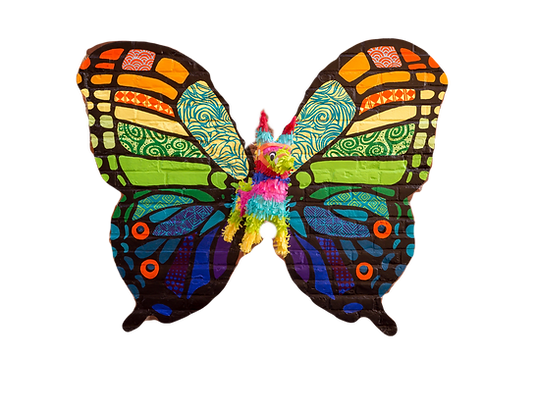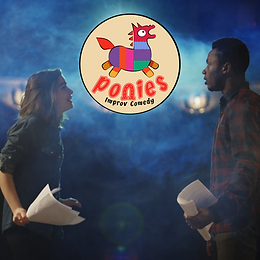




Games Library
The Ponies specialize in short-form improv comedy which centers around creating scenes through the context of games and exercises. Included in our library of games are familiar favorites and original creations. We're always updating our collection too!
Take a look to see how each game is played and check out our guide on how to get your suggestions into the show!

Movie Critics
Two actors begin as movie critics talking about the movie the audience suggested. These two actors can speak to anything about the movie and eventually they will show clips from the film to reiterate their criticisms or praise. The other actors will then act of the movie clips based on the dialogue from the critics.

Newton's Cradle
Just like, "Last Line, First Line" but with a twist. Four actors form two individual scenes with two of the actors, one from each scene, also forming a third scene in the middle. When one scene is running the others are paused but at any time an actor may use the last line of dialogue to continue their scene. For the two actors in the middle, they can choose to use their own line of dialogue twice in a row. Once at the scene they're currently in and then again in the scene they're moving on to.

No Evil
Six actors are put into teams of two and then split up around the stage. One team of two takes center stage and prepares to act out a scene that will be suggested by the audience. The second team comes off stage and faces the audience and is unable to watch the scene as it plays out but they can hear it. The final team stands to the side of the stage and may watch, but they must wear headphones to prevent them from hearing anything.
The first team gets a suggestion from the audience and then performs a scene until it's conclusion. Then, the next team, those that could hear but not see, takes the stage and they try to preform the exact same scene without prior knowledge of the physicality that last team had. Finally, the last team takes the stage having seen the scene play out twice physically but hearing nothing, and they must try to recreate the scene based on only the physical actions of the other actors, filling in the narratives gaps with their best ideas.

Noir
Two actors play characters, a detective and a person with a problem, while the other two actors portray the characters’ inner monologue. The scene begins with the first character entering the office of the detective. When the actor enters the dialogue begins with the detective’s inner monologue saying something about the character entering the scene. Example: “From the moment she walked in I could tell she was trouble. Her legs quivered and she was twitching like she had narrowly escaped a pursuer.” The detective then speaks a brief line of dialogue attempting to incorporate all the details spoken by the inner monologue. Next, the inner monologue of the other character speaks before that character gives a line of dialogue. As the scene goes on, the pattern is always, Inner Monologue one, Character one, Inner Monologue two, Character two.

Number of Words
Each actor in the scene is assigned a number of words they must use in each line of dialogue. Typically these numbers are 1, 2, 3, 4, or 5 but can be anything. The actors then begin the scene where they are only allowed to speak lines of dialogue with as many words as they were assigned.




